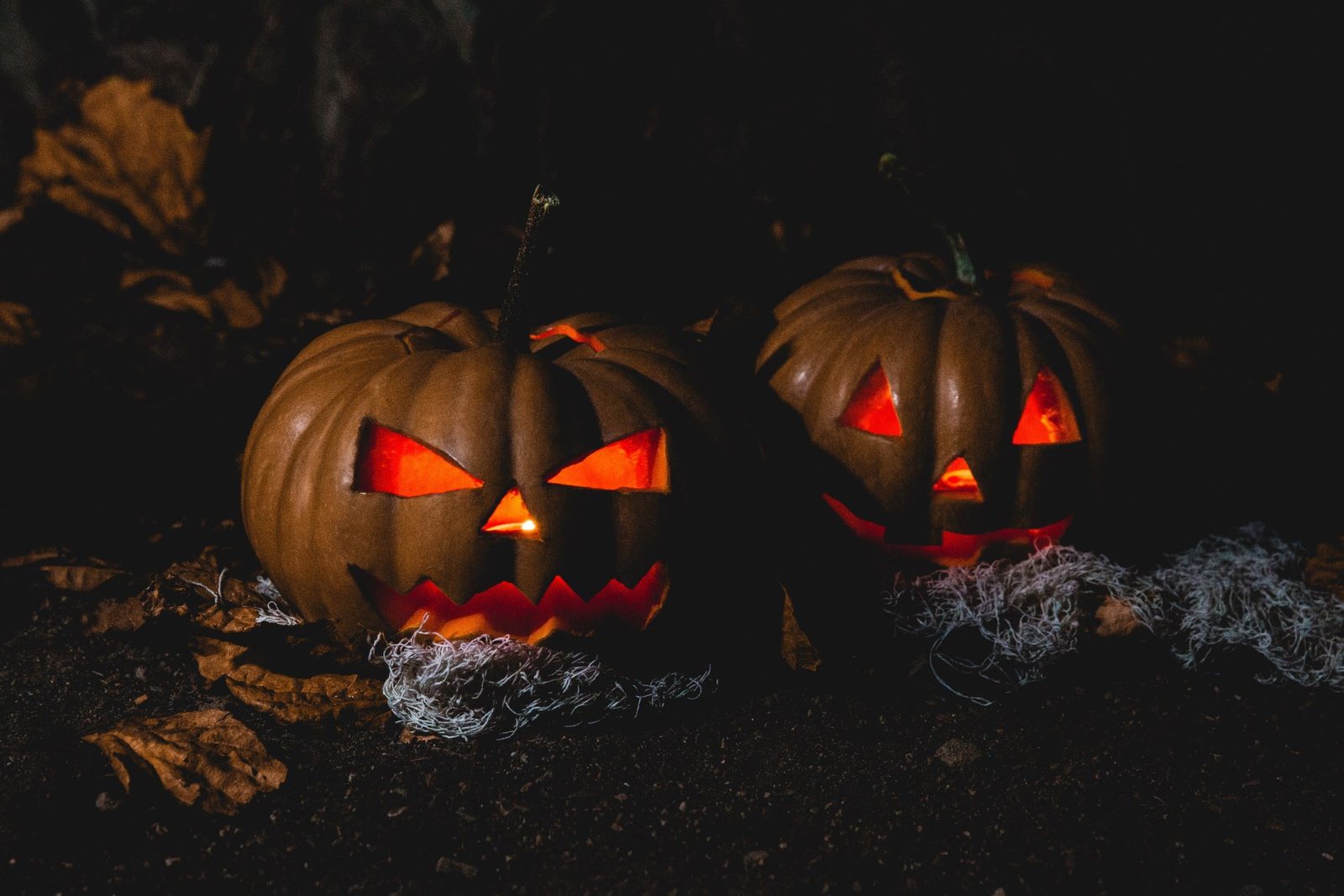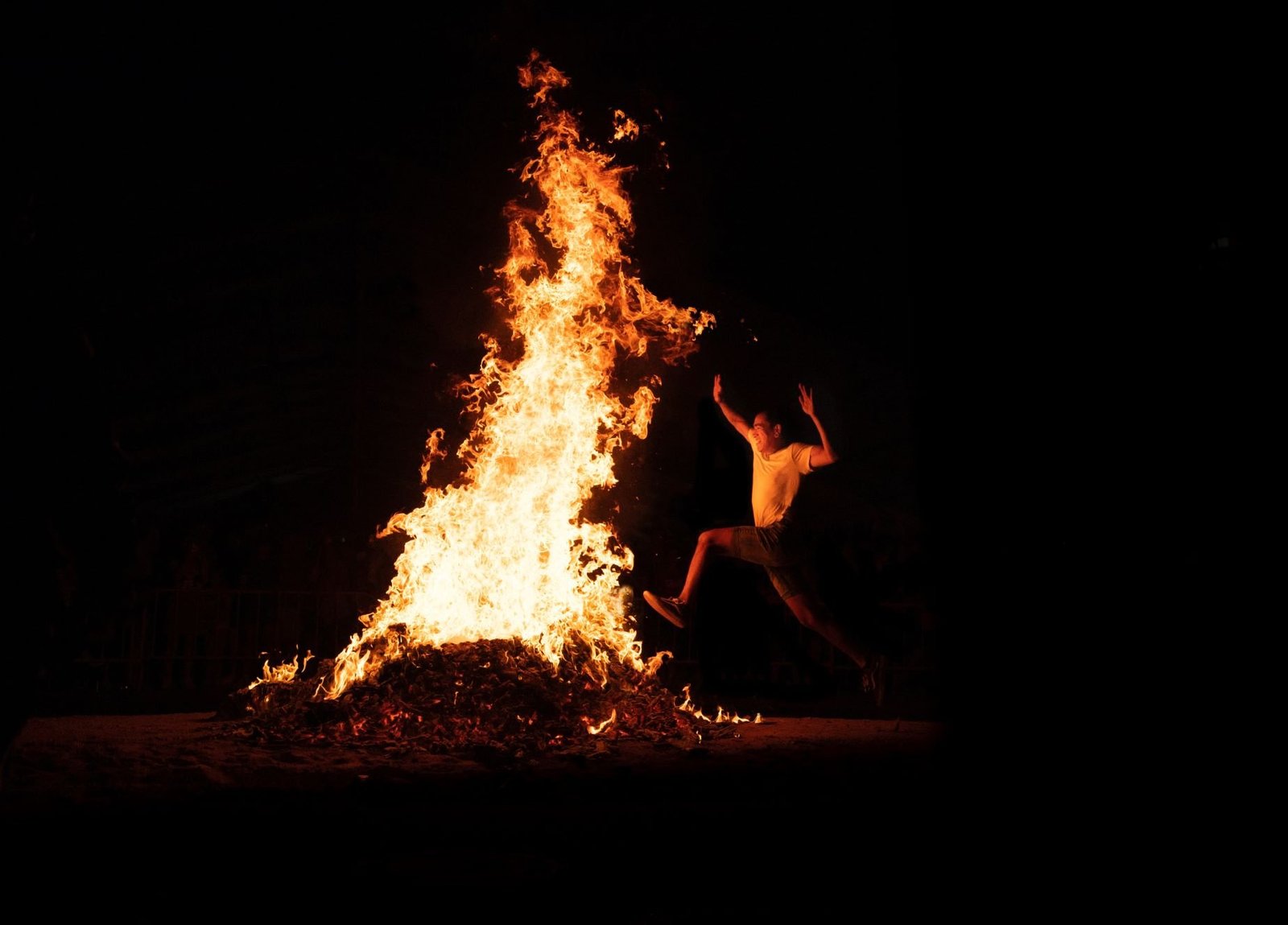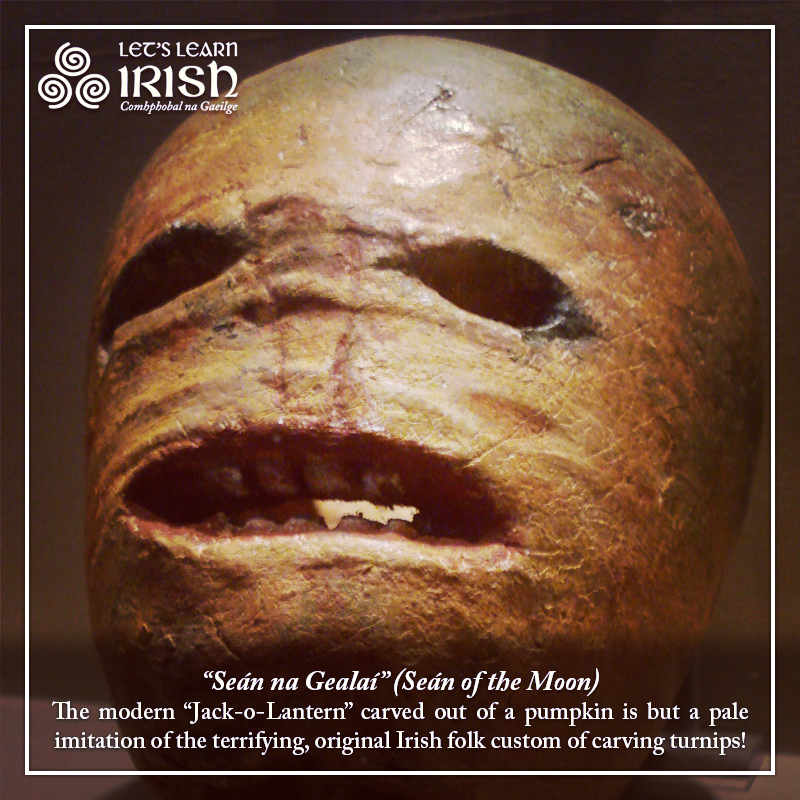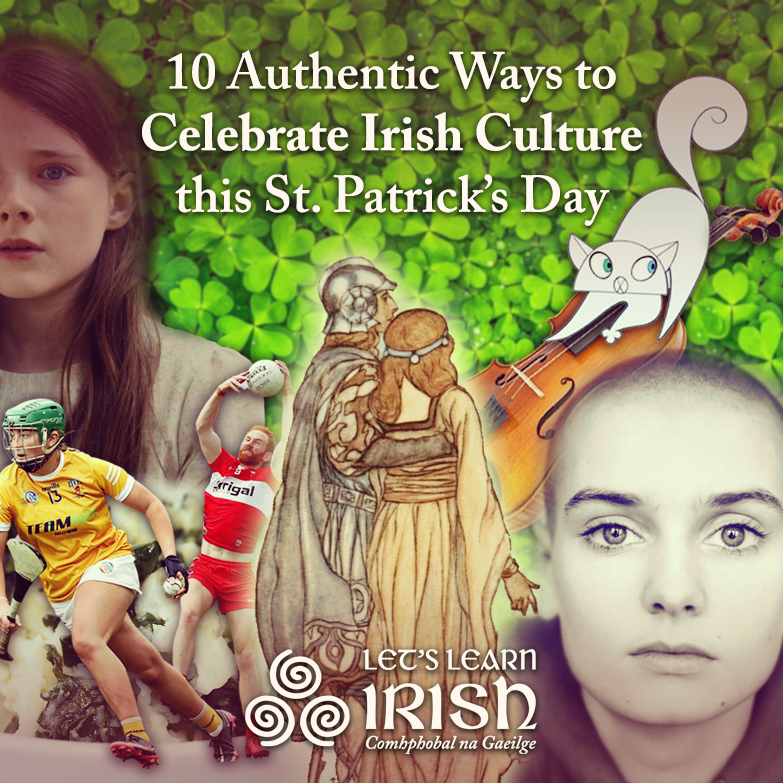The Irish Origins of Hallowe’en

Dressing up, trick-or-treating, bonfires…Hallowe’en is an unusual but beloved holiday. Because of its prevalence in the US (although it is getting more popular in other countries), it is logically assumed that it is an American celebration. However, Hallowe’en – and many well known customs – trace back to Celtic Ireland and the festival of Samhain.
Going into the Darkness
The Celtic religion was based on “the wheel of the year.” Samhain, on November 1st (celebrations started on the eve of October 31st) marked the beginning of the “darker half” of the year. Livestock were brought in from the summer paddocks and the community braced for winter.
More importantly on Samhain, however, the boundaries between this world and the Otherworld were at their thinnest. This allowed the spirits of the dead (Aos Sí) to pass through. Hoping to escape their wrath and survive the winter ahead, communities looked for ways to appease the Aos Sí.
The Start of Hallowe’en Traditions
 In order to pay homage to the spirits that might cross over on Samhain, the Celtic people burned crops and livestock in bonfires as a sacrifice. As one of four Celtic “fire festivals,” the fire was meant to be an act of cleansing as the community prepared for winter. While not as common in the US, bonfires are still a tradition in Irish culture, and not only at Hallowe’en. And how could we forget the practice of carving up jack-o-lanterns from pumpkins, which were traditionally made with turnips!
In order to pay homage to the spirits that might cross over on Samhain, the Celtic people burned crops and livestock in bonfires as a sacrifice. As one of four Celtic “fire festivals,” the fire was meant to be an act of cleansing as the community prepared for winter. While not as common in the US, bonfires are still a tradition in Irish culture, and not only at Hallowe’en. And how could we forget the practice of carving up jack-o-lanterns from pumpkins, which were traditionally made with turnips!
Another way to avoid the acrimony of dead spirits is to make sure that they can’t see you. The tradition of dressing up as scary, ghoulish creatures is thought to have come from the Pagan Irish disguising themselves as dead or evil spirits in order to not be noticed by the Aos Sí.
The Church Gets Involved
In 609 Pope Boniface IV created a holiday called All Saints Day, also known as All-Hallows. The evening before, not surprisingly, was called All-Hallows Eve (precursor to the term “Hallowe’en”). Originally in May, Pope Gregory III later moved All-Hallows to November 1st in order to capitalize on the popularity of the pagan festival Samhain. Honoring ghosts and saints were customs similar enough that the church thought it a better strategy than discouraging Samhain.
To celebrate the saints, it was still encouraged to light a bonfire and dress up as otherworldly spirits. Whereas the Celts offered food and drink to the Aos Sí, the church encouraged people to do the same for the poor. The tricks and pranks attributed to evil spirits were replaced by acts of generosity that was meant to manifest the spirit of the saints.
Hallowe’en in Ireland Today
 While many traditions remained throughout the centuries, All-Hallows Eve eventually became more celebrated than All Saints Day. Going door to door in costumes or giving a small performance in exchange for money or food became increasingly popular in the modern era. (For Irish vocabulary associated with Oíche Shamhna, click here.)
While many traditions remained throughout the centuries, All-Hallows Eve eventually became more celebrated than All Saints Day. Going door to door in costumes or giving a small performance in exchange for money or food became increasingly popular in the modern era. (For Irish vocabulary associated with Oíche Shamhna, click here.)
Although trick-or-treating for candy has only recently become a practice in Ireland, the island where Hallowe’en started has come to embrace the holiday wholeheartedly. The City of Derry is often said to hold one of the best Hallowe’en festivals in Europe and attracts visitors from all over the world. Don’t be surprised if you spot folks dressed up as an chailleach at this time of year!
In addition to the bags of candy, creative costumes, and neighborhood parties, you can take pleasure in knowing that you’re following in the footsteps of Celtic pagans from thousands of years ago. Just watch out for the Aos Sí…
Join the online Irish community for cúrsaí, comhrá & ceardlanna, and follow along on social media @LetsLearnIrish – beidh fáilte romhat!





